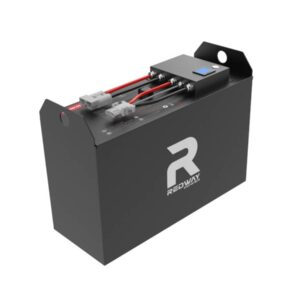How long can a lithium battery sit unused?
Lithium batteries can safely sit unused for 6–12 months if stored at 50%-60% charge in cool, dry conditions (15–25°C). Beyond this period, irreversible capacity loss occurs due to electrolyte degradation and lithium plating. For example, a 3.7V Li-ion cell stored at full charge loses ~20% capacity after 1 year, while partial-state storage reduces degradation to 2–4% annually. How to Maximize Forklift Battery Lifespan
What happens to lithium batteries during long-term storage?

Lithium batteries undergo self-discharge (6–8% monthly) and electrolyte decomposition when unused. The SEI layer thickens, increasing internal resistance by 30–50% annually. Pro Tip: Store batteries at 3.7–3.8V/cell to minimize degradation—full charge accelerates cathode oxidation, while empty states risk copper dissolution.
How does temperature affect stored lithium batteries?
High temperatures accelerate capacity fade—storage at 40°C doubles degradation rates compared to 25°C. Cold storage (0–10°C) slows reactions but requires gradual warming before use to prevent condensation. For instance, EV traction batteries stored at 50% SOC and 15°C retain 95% capacity after 12 months versus 78% at 30°C.
| Temperature | 6-Month Capacity Loss | 12-Month Capacity Loss |
|---|---|---|
| 0°C | 1.2% | 2.5% |
| 25°C | 3.8% | 7.1% |
| 40°C | 8.9% | 17.3% |
Can you revive deeply discharged lithium batteries?
Batteries below 1.5V/cell face permanent damage—copper dendrites form, creating internal shorts. Attempt revival using 0.1C trickle charging for 2 hours before normal charging. Success rates drop below 40% after 6 months of total discharge. Did you know? A 48V e-bike battery left uncharged for 9 months typically requires cell replacement despite voltage recovery attempts.
What’s the optimal storage voltage for lithium batteries?
Maintain 3.7–3.8V/cell (50–60% SOC) to balance degradation mechanisms. Full charge (4.2V) causes electrolyte oxidation (0.5% monthly loss), while 3.0V storage risks anode passivation. For solar storage systems, cycling between 3.5–3.9V extends calendar life by 3× compared to float charging at 4.0V.
| Storage Voltage | Annual Capacity Loss | 5-Year Retention |
|---|---|---|
| 4.2V (100%) | 15–20% | 35–45% |
| 3.8V (50%) | 2–3% | 88–92% |
| 3.3V (20%) | 4–5% | 75–80% |
How often should you check stored lithium batteries?
Test voltage monthly and recharge when cells drop below 3.2V. For long-term storage (6+ months), perform full discharge/charge cycles every 3 months to recalibrate BMS readings. Practical example: Data center backup batteries undergo quarterly 30% partial cycles during storage, maintaining 99% state-of-health over 5 years.
Battery Expert Insight
FAQs
Can I store lithium batteries in the refrigerator?
Yes, but only in airtight containers at 40–60% charge. Remove and acclimate to room temperature for 24 hours before use to prevent moisture damage.
Do all lithium chemistries have the same storage requirements?
No—LiFePO4 tolerates full-charge storage better than NMC (3% vs 8% annual loss at 4.2V), while LTO cells withstand complete discharge without damage.
How does storage affect battery warranty?
Most manufacturers void warranties if batteries drop below 2.0V/cell during storage—regular voltage checks are essential for warranty compliance.
